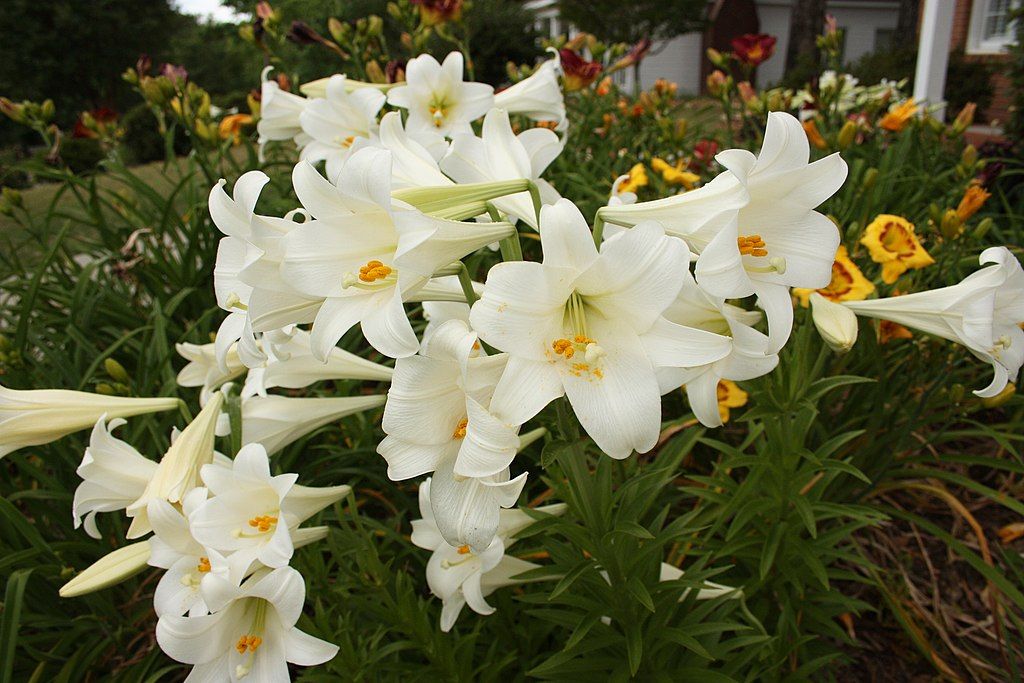At this time of the year, many flower lovers buy pots of Easter lilies at the grocery store to have in their homes during the Easter season.
The type of lily that is mass produced for Easter has the botanical name Lilium longiflorum, and if left to its own devices in a garden, it normally blooms in mid-summer. But each year millions are forced in greenhouses so that they bloom early to meet the retail demands of the Easter season. This is obviously hard on the lily, so that when forcing has happened it doesn't, of course, bloom again that summer at its normal summer bloom time.
However, and this part is important, if it rests comfortably in your garden until next summer, it will revert to its appropriate routine and bloom then. So, if you bought an Easter lily, after it finishes blooming be patient and wait until all danger of frost is past, keeping the plant indoors near a sunny window and watering it once a week. Then find a sunny place in your garden and carefully transplant it outdoors. Make sure that the bulb is planted 8 inches deep, in a well-drained spot where water does not stand after rain. Leave all the foliage on the stem so that the leaves can work on making food for the bulb while it regenerates.
By planting the bulb deep in the soil, you have allowed the roots to form from the base of the stem as well. Fertilize once a month until fall and then mulch before winter. Cut the plant down in late fall only when the leaves turn yellow. You'll have blooms for years to come each following summer because the plant used its first year in the ground to get well established.
This is Moya Andrews, and today we focused on planting Easter lilies.










